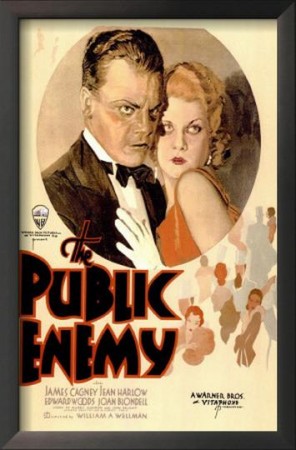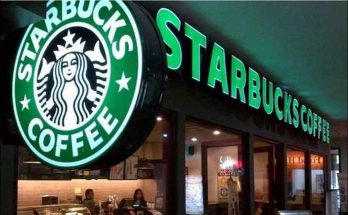The biggest challenge facing Mann was turning 21st-century America back into the world of the early 1930s. As there were some 114 different sets to dress for the film, the art department was kept occupied well before principal photography began. In addition to his crew’s work on developing sets, Mann felt it was important to lens at as many of the actual locations as possible. As Dillinger and his crew traveled across the Midwest during their bank-robbing spree, so would this production.
A keen historian, the writer / director gives an example of just how easy it was for Dillinger and his crew to get away with it all as they robbed. “Indiana State Police had 27 officers for the whole state of Indiana,” Mann offers. “Law enforcement was local, underpaid, poorly supplied, and they didn’t talk to anybody else. They didn’t know what was going on in the next county, unless it was anecdotally in a bar or in a café. If you’re a crew of bank robbers, you could commit a bank robbery in Indiana, go across the border into Illinois and be home free. There was no law against interstate crime and no federal police force at all.”
Though in various states of repair, several of the actual sites visited by Dillinger are still around today. Fortunately, the production was allowed use of the structures for three of his iconic showdowns with the law: the Lake County Jail in Crown Point, Indiana; the Little Bohemia Lodge in Manitowish Waters, Wisconsin; and the Biograph Theater on Lincoln Avenue in Chicago, Illinois.
Before Dillinger’s daring escape in Sheriff Lillian Holley’s (Six Feet Under’s Lili Taylor) personal automobile (after he carved a wooden gun out of a washing board), the Lake County Jail briefly saw him as a reluctant guest. Of the location, production designer Nathan Crowley elaborates: “The front portion, which was Sheriff Holley’s house, was pretty much deteriorated, while the back part, which was the jail, was rusted and corroded. We didn’t have to make anything up, which was fantastic. It had the real corridors and the real geography.”
One of the most notorious photographs ever taken of Dillinger was shot at this jail. The gangster offered a wry smile while leaning on the shoulder of District Attorney Robert Estill (Prison Break’s Alan Wilder); it was a photo that would sabotage Estill’s burgeoning political career. Because many photographs of the jail (especially the common areas) were taken during the famous press conference, Crowley’s team was able to accurately duplicate the area. As there were no existing images of the interiors of the cells themselves, even more imagination went into their dressing.
At the Little Bohemia Lodge in spring 1934, agents from the Chicago and St. Paul offices of the FBI surrounded Dillinger and his gang, only to be outfoxed once again. Along with the notorious Baby Face Nelson, Homer Van Meter and Red Hamilton, Dillinger had just held up a bank and fled to northern Wisconsin to hide out. A violent gunfight ensued in which one innocent local man was killed; additionally, FBI Agent Carter Baum was killed by Nelson. During production of the film, the team lensed at the Little Bohemia 74 years to the week that Dillinger evaded the feds.
The Alpine guesthouse is a tourist spot that now operates as a restaurant, and it took some work to recreate the era. From replicating the gangsters’ rooms and planting shrubbery about the grounds, the design team was fastidious in making the Little Bohemia look as it did during Dillinger’s heyday.
“We were able to shoot not just in the actual place where this happened, but in his actual room,” reveals Mann. “As you can imagine, there’s a certain kind of magic, a kind of resonance, for Johnny Depp to be lying in the bed that John Dillinger was actually in. When he puts his hand on the doorknob and opens the door, it’s the same doorknob that Dillinger put his hand on and opened.”
All of the Dillinger gang successfully escaped from the Little Bohemia, and the event became an unfortunate black mark in the FBI’s history. The current Little Bohemia still hosts a variety of signs and relics from the Dillinger shoot-out, including bullet holes, broken windows and even some of the gang’s luggage which it didn’t have time to retrieve upon its hasty exit. It was, as Mann puts, “a dark day for J. Edgar Hoover and the FBI.”
Melvin Purvis’ assistant during this period, Doris Rogers Lockerman, was helpful in putting both the people and times in perspective for the cast and crew. According to the 92-year-old Lockerman, the Dillinger gang was toting around heavy weapons while holding onto the sideboards of cars during their escapes from the banks. They were simply tough young men, she explains.
On the other hand, she shares that the FBI agents were law school graduates with both proper training and athletic abilities, but they were simply not raised as ruggedly as the criminals in Dillinger’s gang. Those men had a definite advantage in pure physicality and endurance.
It was quite meaningful for the actor who played Purvis to work in the same places that his character did. Christian Bale particularly felt that in the woods near the Bohemia. “When you use the real location, you have a reverence for it,” offers Bale. “It’s incredibly helpful to stand in the same spot and know you’re in the same woods-just sitting silently for awhile-as the man you are portraying. This was where he was actually fired upon and fired back.”
History buffs offer some context to the defeat that almost got Purvis fired. In defense of the FBI’s unsuccessful efforts at the lodge, producer Misher says: “There was danger. They were walking into a blind alley with people who are very capable with their hands and weapons. That’s the divide between whether Melvin Purvis was capable or not. The film answers it. He ultimately led the charge that got John Dillinger and resulted in the task at hand being accomplished: mission accomplished.”
The most famous of the actual sites recreated for the film is the Biograph Theater on Lincoln Avenue in Chicago. According to Crowley, this street “had the biggest facelift. The street is now gentrified, and there have been masses of changes since the 1930s. The finished street was an amalgamation of research and design.”
A combination of period streetcars, cobblestone-lined roads, numerous 1930s storefronts and automobiles gave an eerie and realistic look back in time to the sweltering evening of July 22, 1934: the night John Dillinger was betrayed by the “Lady in Red” and gunned down by Purvis’ men.
No one was more shocked by this turn of events than Dillinger himself. While he knew his run was not indefinite, he had no idea his life would end so soon. Mann explains why the gangster felt comfortable mingling in the open: “Dillinger’s natural charisma, his savvy about public relations, made him popular and charismatic, and he hid out in public. There were people who spotted him, saw him, and they didn’t turn him in.” Until the “Lady in Red.”
But first, a bit of backstory. Anna Sage was an eastern European immigrant who ran a brothel and was in trouble with the immigration department of the federal government. In an effort to avoid deportation, Sage tipped off Purvis and the FBI that Dillinger would be attending the gangster movie Manhattan Melodrama (starring Clark Gable and Myrna Loy) at the Biograph on this particular evening. As the point person in the treachery, Sage became known as the “Lady in Red” when she stood outside the theater. Curiously enough, she was wearing an orange outfit, but the artificial lighting made her dress look red. That moniker would forever be associated with a duplicitous woman.
As Dillinger walked out of the theater with then-girlfriend Polly Hamilton on one arm and Sage on the other, Purvis lit a cigar to alert the many law enforcement personnel that the criminal was in sight. Within seconds, Dillinger knew something was amiss and pulled his gun, but it was too late. He was shot three times and fell dead in an alley a few feet from the movie house.
As the team reconstructed events, Mann was most exacting. He explains the process: “We rebuilt the street front of the Biograph. We engineered it so that we were able to stage exactly where Dillinger was when he died-the same square foot of pavement that he died on-so that when Johnny looked up he saw the last thing Dillinger saw. That means a lot to an actor and to a director…to find yourself in those environments where you can suspend your disbelief and give yourself the magic of the moment.”
The film’s lead agrees. He couldn’t help but be wowed by his surroundings at the Biograph. “Everywhere you looked, it was 1934,” notes Depp. “It was pretty incredible to be standing in front of the Biograph Theater. As far as you could see, it was 1934…from the roads to the building storefronts to the marquee lights. Every detail was accounted for. I salute Michael for that. His attention to detail is unparalleled.”
Views: 193



